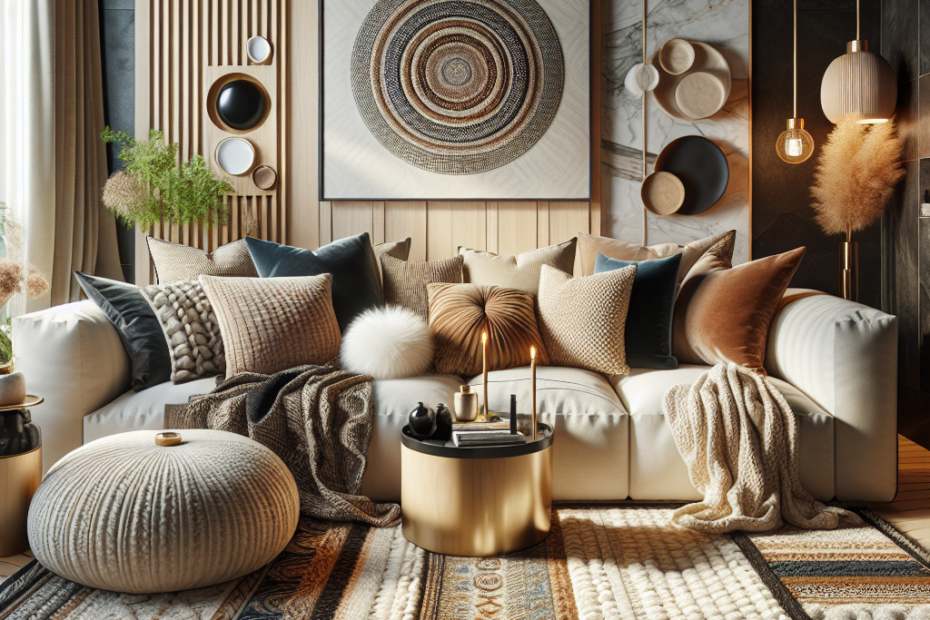The Power of Layered Textures in Living Rooms
In pursuing a welcoming home, they often turn to designing their living rooms with warmth and depth. One method that has gained popularity is using layered textures. This approach can transform a space, making it both aesthetically pleasing and functional. According to a survey by the Interior Design Institute, 85% of interior designers agree that layering textures is essential for a cozy ambiance. This article explores the power of layered textures in the living room and how to achieve this effect effectively.
Understanding Layered Textures
Layering textures involves combining various materials and finishes to add depth and interest to a room. Instead of focusing solely on color or pattern, texture offers a tactile quality that invites touch and engages the senses. They can blend different textures such as wood, metal, fabric, and even plants to make their living room feel more complex and inviting.
The Benefits of Layering Textures
Utilizing layered textures in the living room comes with multiple benefits:
- Enhanced Visual Interest: Different textures create layers that draw and hold visual interest, making spaces look more dynamic and captivating.
- Added Warmth: Soft textures such as plush throws and cushions can warm up a living room, encouraging relaxation.
- Versatility: Textured designs are versatile and can be adapted to fit any style from rustic to modern chic.
- Improved Acoustics: Certain textures can absorb sound, improving the acoustics of a living room by reducing echo.
Statistics on Layered Textures
A research study found that rooms with diverse textures had a 60% increase in perceived comfort and 40% higher perceived warmth compared to rooms with flat, single-material designs (Source: Decorating Insights, 2021). This statistic underscores the impact that layering textures can have on the perception of a room.
How To Achieve Layered Textures in the Living Room
Here are some steps to incorporate layered textures into a living room effectively:
| Step | Description |
|---|---|
| Step 1: Start with a Base | Select foundational pieces like sofas and coffee tables in materials such as leather or wood to anchor the design. |
| Step 2: Add Textiles | Incorporate rugs, throws, and pillows in varying fabrics like velvet, wool, or linen. |
| Step 3: Introduce Contrast | Mix different textures such as smooth metals with rough-hewn wood for a balanced contrast. |
| Step 4: Use Natural Elements | Include plants or stone elements to bring a touch of nature inside. |
| Step 5: Accessorize Smartly | Select textured artwork, vases, and decorative pieces to refine the look. |
Layering Textures in Different Styles
Every interior design style can benefit from layered textures:
- Modern Style: Balance sleek metal and glass with soft furnishings to prevent the space from feeling too cold.
- Bohemian Style: Embrace an array of patterns and fabrics to enhance the eclectic and cozy atmosphere.
- Industrial Style: Use raw materials like brick and steel, complemented by warm fabrics and woods.
- Minimalist Style: Use subtle textures in neutral colors to create interest without overcrowding.
Key Takeaways
- Layered textures add depth, interest, warmth, and improved acoustics to a living room.
- They can easily combine various materials like textiles, metals, wood, plants, and decorative elements for a textured look.
- Different textures can be adapted to fit any interior design style, enhancing the room’s cohesive feel.
FAQ Section
- What are some easy ways to add texture to my living room?
- Incorporate area rugs, throw blankets, textured cushions, plants, and artwork to easily add texture.
- Can layered textures work in a small living room?
- Yes, adding textures can make small rooms feel more intimate and cozy without overcrowding the space.
- What textures are best for a minimalist design?
- Opt for subtle textures like smooth stones, soft cotton, and lightly textured wood to maintain simplicity.
- How can textures improve the acoustics of a room?
- Soft textures like rugs and curtains can absorb sound, reducing echoes and creating a quieter environment.
- Is it necessary to use natural textures?
- While not necessary, natural textures like wood and plants often enhance the warmth and authenticity of a room.
In conclusion, layered textures are a powerful design tool for living rooms, offering both visual and tactile appeal. By thoughtfully combining materials, they can create an inviting and harmonious space that feels like home.
